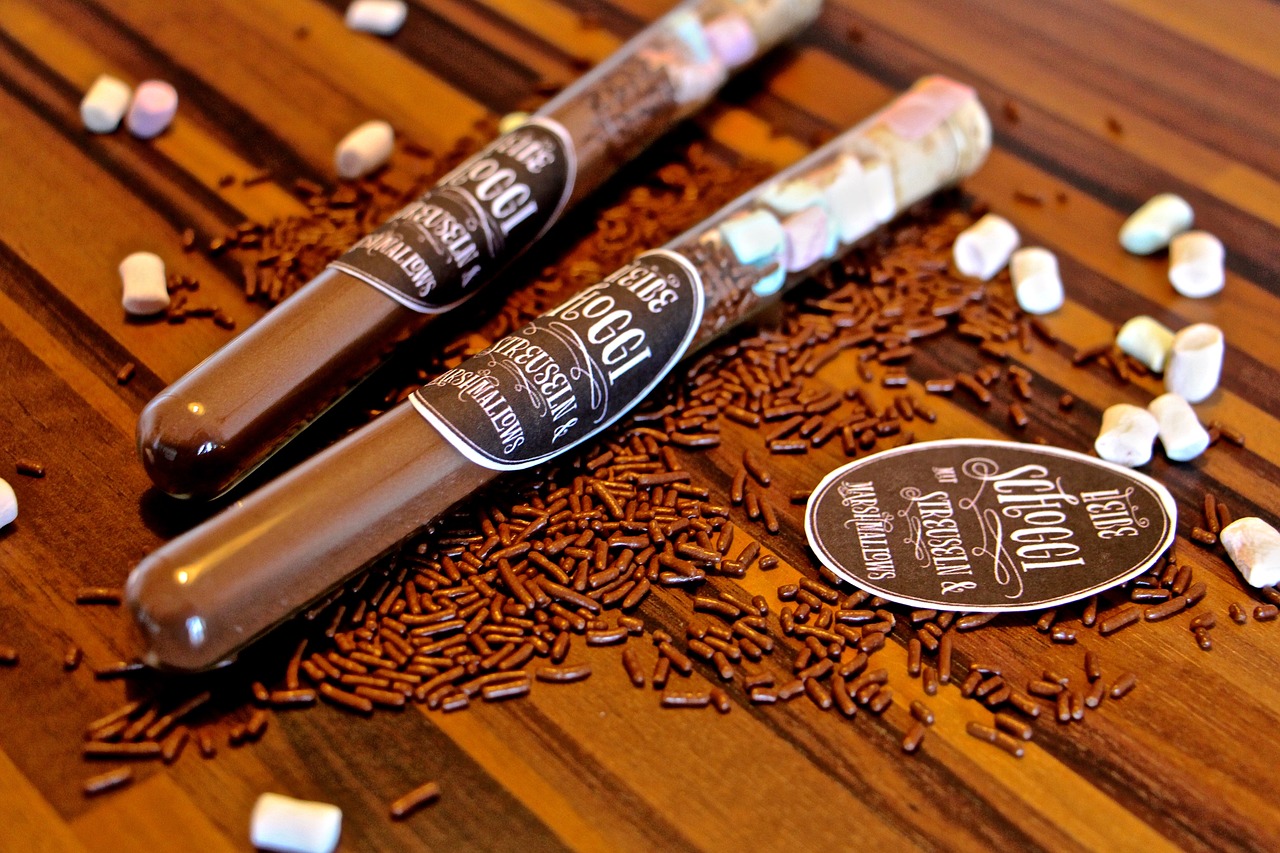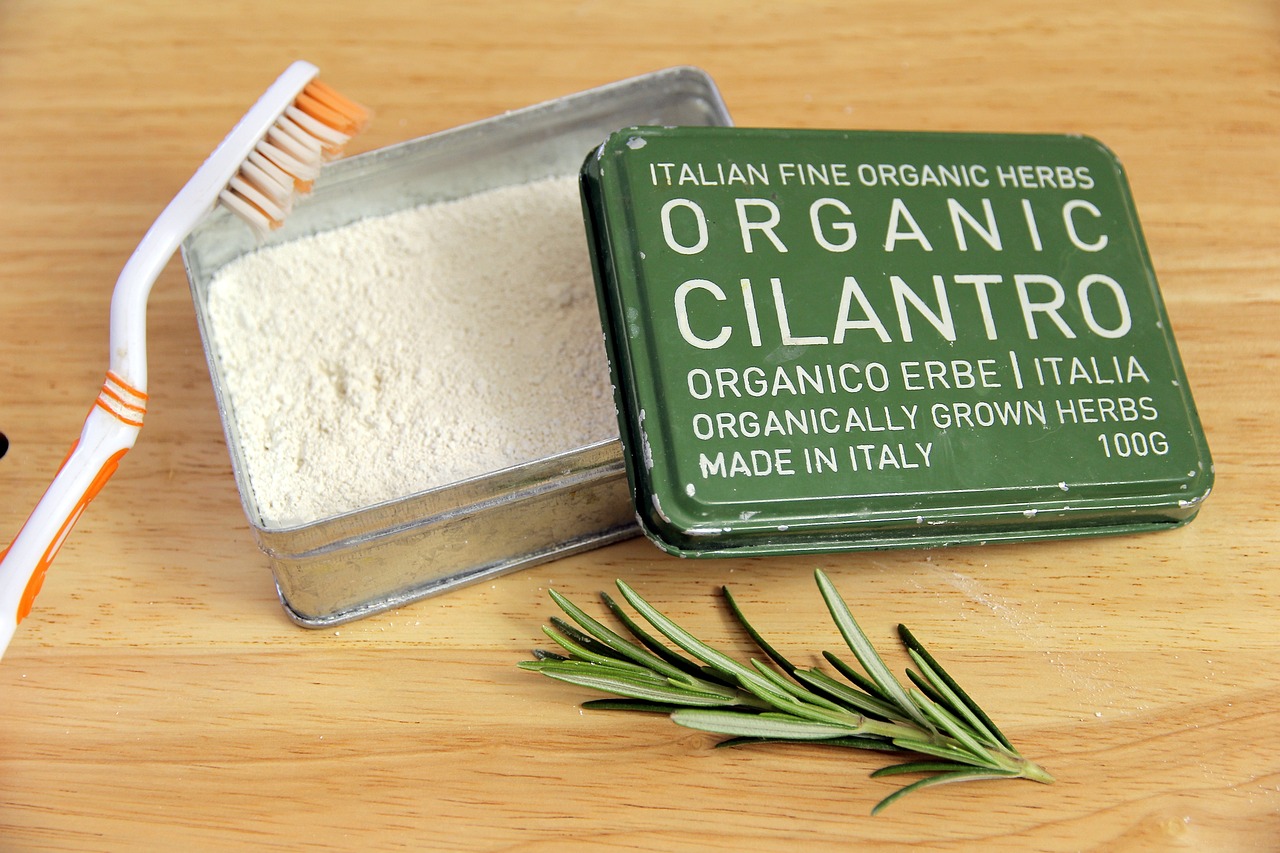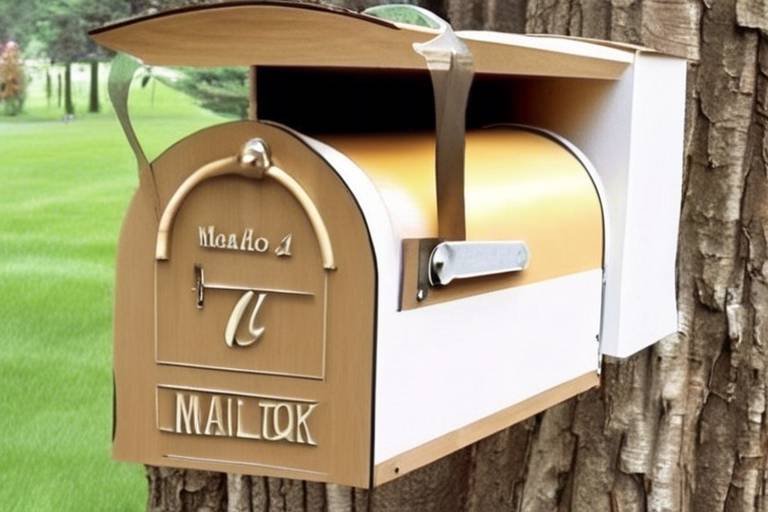Individualize Your Home with DIY Wooden Door Signs
Are you looking to add a personal touch to your home? DIY wooden door signs are a fantastic way to express your creativity while making your living space feel more welcoming. Imagine stepping into your home and being greeted by a beautifully crafted sign that reflects your personality or the essence of your family. It’s like adding a piece of art that tells your story right at the entrance! In this article, we'll delve into the creative world of DIY wooden door signs, exploring everything from the materials you’ll need to the design ideas that can spark your imagination and the step-by-step instructions to bring your vision to life.
Creating your own wooden door sign is not just about aesthetics; it’s also an enriching experience. You get to unleash your creativity, learn new skills, and, most importantly, create something that is uniquely yours. Whether you want a rustic farmhouse style, a modern minimalist design, or something whimsical for your child’s room, the possibilities are endless. The beauty of DIY is that you can tailor your sign to fit your style and the vibe of your home.
But before we dive into the nitty-gritty of crafting, let’s talk about why wooden door signs are such a great choice. Wood is not only durable but also versatile. It can be painted, stained, or left natural, allowing you to customize it in ways that other materials simply can’t match. Plus, the warmth of wood adds a cozy feel to any entryway. So, are you ready to roll up your sleeves and get started on this exciting project? Let’s explore the essential elements that will set you on the path to creating a stunning wooden door sign!

Choosing the Right Wood
When it comes to creating your own DIY wooden door signs, one of the most important decisions you'll make is choosing the right type of wood. The wood you select not only affects the durability of your sign but also contributes to its overall aesthetic appeal. Imagine your sign hanging proudly at your entrance, welcoming guests with a beautiful finish and sturdy construction. So, what are the best wood options for your project? Let's dive into some popular choices!
First up, we have Pine. This softwood is widely favored for its affordability and ease of use. Pine is lightweight, making it perfect for beginners who may be working with hand tools. Its natural light color also provides a great canvas for painting or staining, allowing you to customize your sign to fit your home's theme. However, be cautious with pine as it can dent easily, so it's best suited for indoor use or sheltered areas.
If you're looking for something a bit more robust, consider Cedar. Known for its natural resistance to decay and insects, cedar is an excellent choice for outdoor signs. The rich, reddish hue of cedar can add warmth and charm to your entryway. Plus, its aromatic scent is a delightful bonus! Just remember that cedar can be a bit pricier than pine, but its longevity makes it a worthwhile investment.
Another fantastic option is Birch. This hardwood is known for its smooth surface and fine grain, making it ideal for detailed designs and intricate lettering. Birch is particularly popular among crafters who want a polished look for their signs. It’s important to note that while birch is durable, it can be more challenging to work with compared to softer woods. So, if you're feeling adventurous and ready to take your skills to the next level, birch might just be the wood for you!
Finally, let’s not forget about Maple. This hardwood is incredibly strong and has a beautiful, light color that can be enhanced with various stains. Maple is perfect for those who want a high-end finish and are willing to put in a bit more effort. It’s great for signs that require a bit of finesse, as it holds details exceptionally well.
To help you visualize the characteristics of these woods, here’s a quick comparison table:
| Type of Wood | Durability | Best For | Cost |
|---|---|---|---|
| Pine | Low | Indoor Signs | Low |
| Cedar | High | Outdoor Signs | Medium |
| Birch | Medium | Intricate Designs | Medium |
| Maple | High | High-End Finishes | High |
In summary, the wood you choose for your DIY wooden door sign can make or break your project. Whether you opt for the affordability of pine, the durability of cedar, the elegance of birch, or the strength of maple, each wood type has its unique benefits. So, take some time to consider what you want your sign to convey and how long you want it to last. After all, a well-chosen wood can turn a simple sign into a stunning piece of art that reflects your personal style!

Essential Tools and Materials
Before diving headfirst into your DIY wooden door sign project, it’s crucial to gather all the that will make your crafting experience smooth and enjoyable. Think of it like preparing for a road trip; you wouldn’t want to hit the road without checking your fuel, right? Similarly, having the right tools at your fingertips can mean the difference between a frustrating experience and a fun, creative adventure.
First and foremost, let’s talk about the basic hand tools you’ll need. These are the backbone of any DIY project. You’ll want a reliable handsaw for cutting your wood to size. A chisel can help you create intricate designs or smooth out rough edges. Don’t forget a ruler or measuring tape to ensure your measurements are spot on. And, of course, a sanding block or power sander will be essential for giving your sign that polished finish.
Now, if you’re looking to take your sign-making to the next level, consider investing in some power tools. These can save you a lot of time and effort. A jigsaw is perfect for cutting curves and intricate shapes, while a drill will come in handy for making holes for hanging your sign. If you’re serious about precision, a router can help you create decorative edges that will make your sign stand out. Just remember to follow safety guidelines when using power tools to ensure a safe crafting experience.
Next up are the finishing materials. This is where your sign truly comes to life! You can choose from a variety of paints, stains, and sealants to protect your wooden creation from the elements while adding a splash of color. For example, if you want a rustic look, a wood stain can enhance the natural grain of the wood, while acrylic paints can give you vibrant colors to match your home’s decor. Sealants are crucial for outdoor signs as they protect against moisture and UV damage, keeping your sign looking fresh for years to come.
To summarize, here’s a quick table of the essential tools and materials you’ll need:
| Tool/Material | Purpose |
|---|---|
| Handsaw | Cutting wood to size |
| Chisel | Creating designs and smoothing edges |
| Measuring Tape | Ensuring accurate measurements |
| Sanding Block/Power Sander | Finishing edges and surfaces |
| Jigsaw | Cutting curves and intricate shapes |
| Drill | Making holes for hanging |
| Router | Creating decorative edges |
| Paint/Stain/Sealant | Finishing and protecting your sign |
With the right tools and materials in hand, you’re now ready to embark on your DIY wooden door sign journey. Remember, the key to a successful project is not just having the right equipment but also enjoying the process. So roll up your sleeves, unleash your creativity, and let’s make something beautiful!
Q: Do I need to have prior woodworking experience to make a wooden door sign?
A: Not at all! Many DIY wooden sign projects are beginner-friendly. Start with simple designs, and as you gain confidence, you can try more intricate projects.
Q: What type of wood is best for outdoor signs?
A: Cedar and redwood are excellent choices for outdoor signs due to their natural resistance to rot and insects. Make sure to seal them properly for added protection.
Q: How can I make my sign weather-resistant?
A: Use a high-quality outdoor sealant after painting or staining your sign. This will protect it from moisture and UV rays, ensuring it lasts longer.

Basic Hand Tools
When it comes to crafting your own wooden door signs, having the right at your disposal is essential. These tools not only make the process easier but also enhance the quality of your work. Imagine trying to carve a beautiful design into wood with nothing but a butter knife—frustrating, right? That's why investing in a few key hand tools can make all the difference in your DIY experience.
First and foremost, you'll need a saw. A handsaw or a coping saw is perfect for making precise cuts in wood. The handsaw is great for straight cuts, while the coping saw allows for intricate designs and curves. Pair these with a chisel to refine those edges and add detail to your signs. A chisel set typically comes in various sizes, enabling you to tackle both large areas and fine details.
Next on the list is a measuring tape. Accurate measurements are crucial—imagine cutting a piece of wood only to find it doesn't fit your desired space! A measuring tape helps you avoid such mishaps, ensuring each cut is spot on. Don't forget a square, which will assist you in checking your angles for perfect corners. It’s like having a little helper that ensures everything is aligned just right.
Another must-have tool is a sandpaper. After cutting and shaping your wood, using sandpaper will smooth out rough edges and prepare the surface for painting or staining. It’s like giving your sign a nice spa treatment before the big reveal! You can find sandpaper in various grits, so choose a coarser grit for initial sanding and a finer grit for a smooth finish.
Lastly, a clamp is invaluable when you're working on your sign. It holds your wood steady while you cut or carve, preventing any slips that could ruin your hard work. Think of it as a reliable friend who keeps everything in place while you focus on creating your masterpiece.
Here’s a quick summary of essential basic hand tools for your DIY wooden door sign project:
| Tool | Purpose |
|---|---|
| Handsaw/Coping Saw | For cutting wood into desired shapes and sizes |
| Chisel | For adding details and refining edges |
| Measuring Tape | For accurate measurements |
| Square | For checking angles and alignment |
| Sandpaper | For smoothing rough edges |
| Clamp | For holding wood steady during cutting or carving |
With these basic hand tools in your arsenal, you're well-equipped to start crafting stunning wooden door signs that reflect your personal style. Remember, the right tools not only enhance the quality of your work but also make the crafting process more enjoyable. Now, let's dive deeper into the world of power tools that can further elevate your DIY game!
- What is the best type of wood for a door sign?
Softwoods like pine or cedar are great for beginners due to their ease of cutting and shaping. - Do I need power tools for my project?
While hand tools are sufficient, power tools can save time and improve precision, especially for larger projects. - Can I paint my wooden sign?
Absolutely! Using outdoor paint or sealants can protect your sign from the elements. - How do I hang my wooden door sign?
Consider using adhesive strips, screws, or decorative hooks, depending on your sign's weight and design.

Power Tools for Precision
When it comes to crafting stunning wooden door signs, precision is key. That's where power tools come into play! These tools not only save you time but also enhance the accuracy of your cuts and shapes, giving your projects that professional touch. Imagine trying to cut a perfect circle with a hand saw—frustrating, right? Power tools make this process a breeze!
One of the most essential power tools for your DIY projects is the jigsaw. This versatile tool allows you to cut intricate shapes and curves, which is perfect for creating unique designs that reflect your personality. Whether you're crafting a whimsical sign for a child's room or a sleek, modern piece for your entryway, a jigsaw can help you achieve those detailed cuts with ease.
Another fantastic tool is the router. This tool is perfect for adding decorative edges or grooves to your wooden sign. By using a router, you can create a visually appealing finish that elevates your sign from ordinary to extraordinary. Plus, with the right bit, you can carve out letters or designs directly into the wood, giving you a truly customized look.
Don't overlook the importance of a power sander in your toolkit. Sanding is crucial for achieving a smooth surface, and a power sander will save you hours of manual labor. With various grit options available, you can start with a rougher grit to remove any imperfections and finish with a finer grit for a polished feel. This step is essential, especially if you're planning to paint or stain your sign, as it ensures that the finish adheres properly.
To help you choose the right power tools for your projects, consider the following table that outlines some popular tools and their uses:
| Power Tool | Primary Use |
|---|---|
| Jigsaw | Cutting intricate shapes and curves |
| Router | Creating decorative edges and grooves |
| Power Sander | Smoothing surfaces for a polished finish |
| Drill | Making holes for mounting or decorative elements |
Investing in these power tools not only enhances your crafting experience but also opens up a world of possibilities for your wooden door sign projects. With the right tools in hand, you can let your creativity run wild and produce stunning pieces that are sure to impress. So, whether you're a seasoned DIYer or just starting out, don't hesitate to embrace the power of these tools!
- What is the best wood for a DIY door sign?
Softwoods like pine are often preferred for beginners due to their ease of cutting and affordability, while hardwoods like oak offer durability and a beautiful finish.
- Do I need power tools to make a wooden sign?
While you can create signs using hand tools, power tools significantly improve efficiency and precision, making them highly recommended for more complex designs.
- How do I protect my wooden door sign?
Applying a sealant or outdoor varnish can protect your sign from the elements, ensuring it lasts for years to come.

Finishing Materials
When it comes to crafting your DIY wooden door sign, the finishing materials you choose can make all the difference between a basic project and a stunning masterpiece. Finishing not only enhances the aesthetic appeal of your sign but also provides protection against the elements, ensuring that your creation stands the test of time. So, what should you consider when selecting finishing materials? Let's dive into the world of paints, stains, and sealants!
First off, paints are a popular choice for those looking to add a splash of color to their wooden signs. You can opt for acrylic paints, which are water-based and easy to clean up, making them perfect for beginners. They come in a wide array of colors, allowing you to express your creativity freely. However, if you're aiming for a more rustic look, you might want to consider using chalk paint. This type of paint provides a matte finish and adheres well to wood, giving your sign that charming, vintage vibe.
On the other hand, if you prefer to showcase the natural beauty of the wood, stains are an excellent option. Wood stains penetrate the surface of the wood, enhancing its grain and providing a rich, warm tone. There are various types of stains available, including oil-based and water-based options. Oil-based stains tend to offer deeper colors and longer-lasting results, while water-based stains dry quickly and are easier to clean up. When applying stain, remember to test it on a scrap piece of wood to see how it looks before committing to your sign.
Lastly, we have sealants, which are crucial for protecting your wooden sign from moisture, UV rays, and wear and tear. A good sealant will create a barrier that keeps your sign looking fresh and vibrant. Polyurethane is a popular choice, as it comes in both water-based and oil-based varieties. Water-based polyurethane dries clear and is less toxic, making it a safer option for indoor projects. Oil-based polyurethane, while more durable, can yellow over time, so keep that in mind when choosing your finish. Additionally, there are spray sealants available that can make the application process quick and easy.
To summarize, here's a quick comparison of the finishing materials you might consider for your DIY wooden door sign:
| Material Type | Characteristics | Best For |
|---|---|---|
| Paint | Variety of colors, easy to apply | Bright, colorful designs |
| Stain | Enhances wood grain, rich tones | Natural wood finish |
| Sealant | Protective layer, moisture resistance | Durability and longevity |
Choosing the right finishing materials can elevate your wooden door sign from a simple craft to a stunning piece of art. Whether you want a vibrant painted look, a natural stained finish, or a protective seal to ensure longevity, the options are plentiful. So, gather your materials and get ready to make your door sign truly unique!
Q: What is the best paint for outdoor wooden signs?
A: For outdoor wooden signs, it's best to use exterior acrylic paint or oil-based paint, as they offer better durability against the elements.
Q: Can I use stain on previously painted wood?
A: Yes, but you may need to sand down the existing paint to ensure the stain adheres properly to the wood surface.
Q: How long does it take for sealant to dry?
A: Drying times vary by product, but most sealants will be dry to the touch within a few hours. However, it's best to wait 24 hours before exposing the sign to moisture.

Design Ideas and Inspiration
When it comes to crafting your own wooden door signs, the world is your oyster! The beauty of DIY projects lies in the freedom to express your personality and style. Whether you're aiming for a rustic farmhouse vibe, a modern minimalist look, or something whimsically fun, there are countless design ideas to spark your creativity. Let's dive into some exciting themes and concepts that can make your wooden door signs truly stand out.
First off, consider the theme of your sign. Are you looking to create a welcoming entrance for your home? A simple yet elegant "Welcome" sign can be a perfect choice. You can embellish it with decorative elements like floral patterns or geometric designs. If you want something more playful, how about a sign that says "Home Sweet Home" in a fun, curvy font? This adds a touch of warmth and charm, making it an inviting sight for guests.
Another popular theme is personalization. Think about incorporating your family name or a meaningful quote that resonates with you. For instance, a sign that reads "The Smiths' Nest" can give your home a unique identity. You can also opt for a seasonal approach, creating signs that celebrate holidays or special occasions. Imagine a festive "Happy Holidays" sign adorned with snowflakes for winter or a vibrant "Summer Vibes" sign decorated with sunflowers for the warmer months!
Now, let’s talk about fonts and typography. The font you choose can dramatically affect the overall look of your sign. For a rustic feel, you might want to go with a bold serif font that has a handcrafted look. On the other hand, if you're leaning towards a modern aesthetic, sleek sans-serif fonts can add a clean and contemporary touch. Don't be afraid to mix and match different fonts to create visual interest, but remember to keep it legible—after all, you want your message to be clear!
Color is another crucial element in your design. The right color palette can evoke different emotions and set the tone for your space. Earthy tones like browns, greens, and creams work well for a natural, rustic vibe, while brighter colors such as teal, coral, or sunflower yellow can bring a cheerful and vibrant energy. You can also use a technique called ombre painting, where one color gradually fades into another, adding depth and dimension to your sign.
Additionally, consider incorporating textures into your design. For example, you can use a combination of smooth and rough finishes to create contrast. Adding elements like burlap, twine, or even small wooden embellishments can enhance the tactile experience of your sign. This not only adds visual appeal but also makes your creation feel more dynamic and engaging.
If you're looking for a bit of guidance, here’s a quick table showcasing some popular design ideas along with their characteristics:
| Design Idea | Characteristics |
|---|---|
| Welcome Sign | Warm and inviting, often embellished with decorative elements. |
| Family Name Sign | Personalized, adds a unique identity to your home. |
| Seasonal Signs | Celebrates holidays or special occasions, colorful and festive. |
| Inspirational Quotes | Motivational, can be customized with different fonts and colors. |
Finally, don’t forget to explore mixed media options! You can combine wood with other materials like metal, glass, or fabric to create a multidimensional effect. This not only enhances the aesthetic but also allows you to experiment with various textures and finishes. Imagine a wooden sign with metal letters or a glass embellishment—such combinations can transform a simple door sign into a stunning piece of art!
In conclusion, the possibilities for designing your own wooden door signs are virtually limitless. With a little creativity and imagination, you can craft a sign that not only serves a functional purpose but also adds a personal touch to your home. So grab your tools, unleash your inner artist, and let your personality shine through your wooden creations!
- What type of wood is best for door signs? Popular choices include cedar, pine, and plywood, each offering unique characteristics and durability.
- Can I use paint on my wooden sign? Absolutely! Using outdoor-quality paint or stain will protect your sign from the elements.
- How do I hang my wooden door sign? You can use adhesive hooks, nails, or even decorative brackets depending on the weight and design of your sign.
- Are there any design software tools I can use? Yes! Tools like Canva or Adobe Spark can help you visualize your designs before you start crafting.

Step-by-Step Crafting Process
Creating your own DIY wooden door sign can be an incredibly rewarding experience. Not only does it allow you to express your personal style, but it also adds a unique touch to your home. Let’s dive into the step-by-step crafting process that will guide you through this exciting journey. Whether you’re a seasoned crafter or a complete novice, these steps will ensure that you end up with a beautiful sign that you can proudly display.
First things first, you need to gather all your materials and tools. Having everything in one place will save you time and keep your workspace organized. Here’s a quick checklist to keep you on track:
- Wood of your choice (like pine, cedar, or plywood)
- Measuring tape
- Pencil for marking
- Saw (hand saw or jigsaw)
- Sander (or sandpaper)
- Paint or stain
- Sealant for protection
Now that you have everything ready, the first step is measuring and marking. This is crucial for ensuring that your sign looks professional. Use your measuring tape to determine how large you want your sign to be. Once you have your dimensions, mark them clearly on your wood with a pencil. Remember, measure twice and cut once! This old adage is key to avoiding mistakes that could cost you time and materials.
Next up is the cutting and shaping of your wooden sign. Carefully follow your marked lines and use your saw to cut the wood into the desired shape. If you’re feeling adventurous, you can create unique shapes like a house, heart, or any silhouette that resonates with your theme. After cutting, it’s time to smooth out the edges with your sander. This not only enhances the appearance of your sign but also makes it safe to handle.
Once your sign is cut and shaped, it’s time to get creative with the design. You can use stencils, freehand painting, or even transfer techniques to add your desired text or graphics. Think about what message you want to convey. Is it a warm welcome, a family name, or perhaps a fun quote? The possibilities are endless! Don’t forget to choose fonts and colors that reflect your personality and the vibe of your home.
After you’ve applied your design, let the paint or stain dry completely. This drying time is essential for achieving a smooth finish. Once dry, you can apply a sealant to protect your sign from the elements, especially if it will be displayed outdoors. A good sealant will also enhance the colors and make them pop!
Finally, it’s time to hang your masterpiece. Consider using sturdy hooks or brackets that can support the weight of your sign. Make sure to choose a location that showcases your creation, whether it’s on your front door, in your entryway, or even in your garden. Step back and admire your work – you’ve just created a one-of-a-kind piece that adds character to your home!
To help you further in your DIY journey, here are some frequently asked questions about crafting wooden door signs:
- What type of wood is best for outdoor signs? Cedar and redwood are excellent choices as they are naturally resistant to moisture and decay.
- Can I use regular paint on my wooden sign? Yes, but make sure to use outdoor paint or seal it properly to protect it from the elements.
- How do I ensure my letters are straight? Use a ruler or a level to draw light pencil lines to guide your lettering.

Measuring and Marking
When it comes to crafting your own wooden door sign, may not be the most glamorous part of the process, but it’s undoubtedly one of the most crucial. Think of it as laying the groundwork for a beautiful house; without a solid foundation, everything else can crumble. So, how do you ensure your measurements are spot on? Start by gathering your materials: a measuring tape, a straight edge, and a pencil or chalk for marking. These simple tools will become your best friends in this creative journey.
First, take a moment to decide on the dimensions of your door sign. Do you envision a small, cute plaque or a larger, more prominent statement piece? Once you have your size in mind, use your measuring tape to get precise measurements. Remember, the old saying “measure twice, cut once” is especially true in woodworking. It’s better to take a few extra moments to double-check your dimensions than to end up with a piece that’s too small or, even worse, too large!
Next, it’s time to mark your wood. Using a straight edge, draw your lines where you plan to cut. This is where your creativity can start to shine. You might want to sketch out your design lightly on the wood before making any cuts. Using graphite pencils or chalk can help you visualize the final product without leaving permanent marks. If you’re feeling adventurous, consider using a template for more intricate designs. You can create one from paper or cardboard, which can be traced onto your wood for precision.
For those who prefer a more structured approach, here’s a simple measuring and marking checklist to follow:
- Decide on the overall size of your door sign.
- Use a measuring tape to get accurate measurements.
- Draw straight lines with a straight edge for cutting.
- Sketch your design lightly on the wood.
- Consider using templates for complex designs.
Finally, don’t forget to account for any hanging hardware you might need. If you plan to mount your sign, make sure to mark where the holes will go, ensuring they’re evenly spaced and aligned. Taking these extra steps will not only make your crafting process smoother but will also lead to a more professional-looking final product.
Q: What tools do I need for measuring and marking?
A: The essential tools include a measuring tape, a straight edge, and a pencil or chalk for marking. A square can also be helpful for ensuring right angles.
Q: How do I ensure my measurements are accurate?
A: Always measure twice before cutting and use a reliable measuring tape. It’s also helpful to have a second person to assist you in holding the tape for longer measurements.
Q: Can I use a template for my design?
A: Absolutely! Templates can help you achieve intricate designs and ensure consistency. You can create templates from paper or cardboard to trace onto your wood.
Q: What if I make a mistake in my measurements?
A: Mistakes happen! If you realize a measurement is off, you can either adjust your design or use wood filler for minor errors. Always try to plan for the unexpected!

Cutting and Shaping Techniques
When it comes to crafting your own wooden door signs, mastering the is absolutely essential. Think of these techniques as the foundation of your project; without them, your sign might not turn out as beautifully as you envisioned. The first step is to choose the right saw for your project. A jigsaw is a fantastic tool for making intricate shapes, while a circular saw is perfect for straight cuts. If you're looking for precision, a scroll saw can create detailed designs that will make your sign stand out.
Before you even pick up a saw, it’s crucial to plan your design carefully. Use a pencil to sketch your design onto the wood. This step is akin to an artist sketching on a canvas—everyone makes mistakes, but having a clear outline will guide you as you cut. Once your design is laid out, you can begin cutting. Start with the larger sections of your sign before moving on to the finer details. This approach not only saves time but also reduces the risk of damaging intricate parts while handling the larger pieces.
Next, let’s talk about shaping. After cutting, you’ll likely need to refine the edges of your sign. This is where sanders come into play. A belt sander is great for smoothing out rough edges, while a detail sander can help you reach those tricky corners. Sanding is not just about aesthetics; it also prepares the surface for painting or staining, ensuring that your finish adheres properly. Remember, a smooth surface will enhance the overall look of your sign, making it more inviting and professional.
In addition to sanding, you might want to consider using a router for decorative edges. This tool can add a beautiful, finished look to your sign by creating rounded or beveled edges. It's similar to giving your project a frame—suddenly, it feels complete. If you're feeling adventurous, you can even use stencils or templates while routing to create unique patterns or lettering directly into the wood.
Finally, always remember safety first! When using power tools, wear protective gear such as goggles and ear protection. It’s easy to get caught up in the excitement of crafting, but safety is paramount. By following these cutting and shaping techniques, you’ll not only enhance your DIY skills but also ensure that your wooden door sign turns out just as you imagined, ready to greet guests with a touch of your personality.
- What type of wood is best for door signs? Generally, softer woods like pine are easier to work with, while hardwoods like oak provide durability.
- Can I use paint on my wooden sign? Absolutely! Just make sure to use outdoor paint if your sign will be exposed to the elements.
- How can I ensure my cuts are straight? Using a straight edge or a guide can help you achieve precise cuts.
Frequently Asked Questions
- What type of wood is best for DIY wooden door signs?
Choosing the right wood is essential for both durability and aesthetics. Popular options include pine, which is lightweight and easy to work with, and cedar, known for its resistance to moisture. If you're looking for something more robust, oak or maple can offer a beautiful finish but may require more effort to cut and shape.
- What tools do I need to create a wooden door sign?
You'll need a mix of basic hand tools and possibly some power tools for precision. Essential hand tools include a saw, chisel, and sander. If you want to speed up the process and achieve cleaner cuts, consider investing in a jigsaw or a router. Don't forget about safety gear like goggles and gloves!
- How do I come up with design ideas for my sign?
Let your creativity flow! Think about themes that resonate with you or your family, such as nature, quotes, or hobbies. You can browse online platforms like Pinterest for inspiration or even sketch out your ideas on paper. Remember, the goal is to create something that reflects your personality and style.
- What finishing materials should I use?
Finishing materials are crucial for protecting your sign and enhancing its appearance. You can choose from various paints, stains, and sealants. For a rustic look, a natural wood stain might be ideal, while paint can add vibrant color. Make sure to apply a protective sealant to withstand the elements if your sign will be outdoors!
- Can beginners successfully create a wooden door sign?
Absolutely! With the right guidance and a bit of patience, anyone can create a beautiful wooden door sign. Start with simple designs and gradually challenge yourself as you gain confidence. Remember, every expert was once a beginner, so enjoy the process and have fun!
- How do I ensure accurate measurements for my sign?
Accurate measurements are key to a successful project. Use a reliable measuring tape and a square to mark your wood before cutting. Double-check your measurements, and don’t rush—taking your time will pay off in the end! If you're unsure, consider using a template to guide your cuts.
- What are some common mistakes to avoid?
Some common pitfalls include rushing through the measuring process, not using the right tools for the job, and skipping the finishing steps. Always take your time, follow instructions carefully, and don’t hesitate to ask for help or watch tutorial videos if you're unsure about a technique.



















